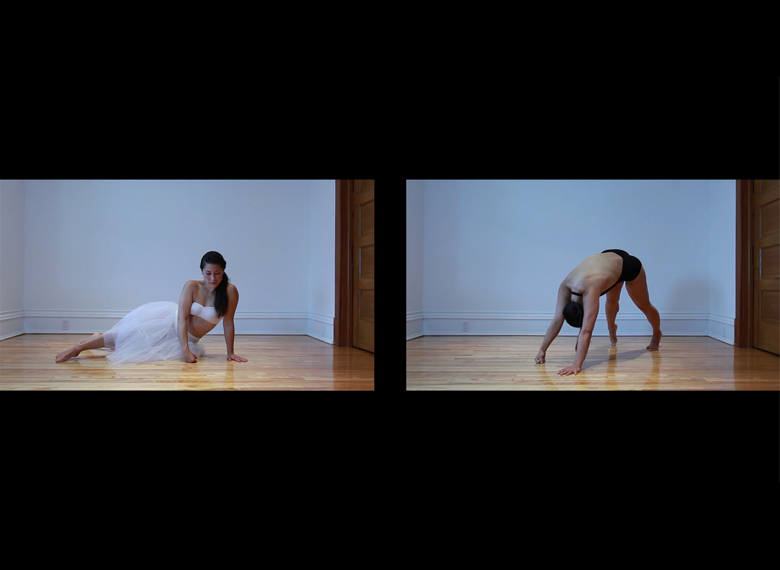Beyoncé’s Lemonade did not convince bell hooks.
It is with the much-discussed visual album’s disorienting ambition to simultaneously “challenge the ongoing present day devaluation and dehumanization of the black female body” and “to seduce, celebrate, and delight” that hooks has taken issue. Lemonade presents its viewers with both multidimensional examples of black female experience and “stylized fashion plate fantasy representations,” often in the very same frame.1 This critique causes a double take. It causes an internal squirm deep in the stomach. A feeling that will only become more common as mainstream music, social politics and activism merge—or attempt to merge—more deeply. It is an unabashed yearning to give over: to be seduced, to celebrate and to delight in positive, powerful and empowering representations of women with no strings attached—to hit pause on criticality while we watch Beyoncé smash shit in a transcendent yellow gown. Responses like hooks’s essay “Moving Beyond Pain” are grounding. Whether or not you agree with hooks’s rebuttal, its existence facilitates a re-engagement with the complex project of visualizing non-oppressed, proud, joyful, self-loving bodies.
At least some of this was on Tanya Lukin Linklater’s mind when she produced the web commission Slay All Day (whose title is a nod to lyrics from Beyoncé’s “Formation”) for the soon-to-be-open Remai Modern museum in Saskatoon. When we spoke about the project, Lukin Linklater hinted at an interest in Beyoncé’s Lemonade because it provides a unique model of pop culture’s engagement with the politics, history and imagery of African American people. As an Alutiiq artist from Alaska, now based in Northern Ontario, Lukin Linklater drew inspiration for the video Slay All Day from points of connection between feminist politics, Indigenous histories and African American experiences (while careful to acknowledge the thoroughly individual nature of the latter two distinct histories).
Slay All Day combines bodily movements and dance elements across genres and generations.
Slay All Day is a four-minute silent choreography, partially improvised by Toronto-based dancer Ceinwen Gobert. The video opens on a split screen: Gobert occupies an unadorned room in both screens wearing a white bandeau bra and knee-length white tutu on the left and a simple black leotard on the right.
|
The dancer is still. While her counterpart sees the entire choreographed sequence through, she punctuates specific moments in the performance. |
|
|
|
|
|
|
|
She begins to move, almost imperceptibly, pulsing like a slow lung, up and down, expanding and deflating. Suddenly, she drops almost to the floor, muscles collapsing as though folding inward, storing themselves ergonomically inside the shell of the body. |
Prompted dually by gestural qualities found in Robert Flaherty’s 1922 film Nanook of the North and kinetic patterns related to Inuit athletics, Lukin Linklater’s choreography is distinctive. And just as Nanook of the North represents a kind of atemporal space, attempting to create a crude fantasy of Inuit life frozen in time, Slay All Day employs a different kind of temporal dissonance, combining bodily movements and dance elements across genres and generations. However, the intentions behind these two projects are radically different—Slay All Day provides a thoughtful rebuttal to a famous and, as the artist herself mentions, mystifyingly still-celebrated piece of salvage ethnography.
Gobin alternatingly moves her head in a rigid, mechanical way as though descending a set of notches incrementally (a common gestural sequence in recent pop and hip hop choreography, found in Lemonade to be sure) and with her fist seems to demarcate a line or map on the floor. Her toes are often curled inward, used as blunt supports. Lukin Linklater explains that some of these bodily configurations draw in particular from athletic games like the knuckle hop, common at events like the Arctic Winter Games, the Traditional Circumpolar Northern Games and the World Eskimo-Indian Olympics. The knuckle hop is an endurance-based competition in which athletes must support the full weight of their bodies using only their knuckles and toes, making their way across the floor by hopping in a push-up position. Rather than channelling the physical pain engendered by this traditional game, Lukin Linklater’s choreography evokes insistence—Gobin plants herself gracefully into the floor with one fist, closed tightly (dense) but dexterous. Slay All Day sets in motion the insistence of the closed fist; this symbol of resistance and solidarity is mobilized, supports the weight of a body, anchors that body, and translates to a feeling of rootedness.
Slay All Day sets in motion the insistence of the closed fist...
Written into this choreography, embedded in each gesture, is the exigency of decolonizing Indigenous bodies and envisioning the female body through a feminist lens; these intentions are reinforced by the artist-as-choreographer’s tacit presence and set of influences. Abandonment to the simplicity of motion—its non-verbal legibility—offers a direct and potent impact, part of why this work thrives as a web commission and standalone project. Our desire to be seduced, celebrate and delight—as bell hooks would say—in bodies onscreen is once again tested; Lukin Linklater creates a tension between the ethics of looking at the female body and the emancipatory allure of watching a strong body manifest history, tradition, collective memory. It is unequivocally through the body that Lukin Linklater’s devotion to navigating difficult histories and entangled personal investments is felt and seen. Slay All Day summons misunderstood and politically fraught influences, from Nanook of the North to Lemonade, and reinvests them in a choreography both tough and tender.


